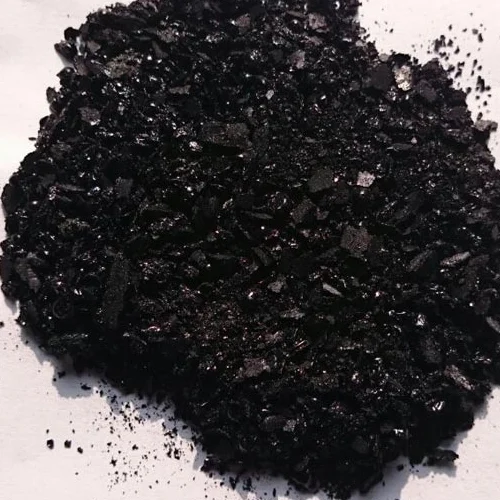sulphur black dyes
The Role of Sulphur Black Dyes in the Textile Industry
Sulphur black dyes are a significant category of colorants widely utilized in the textile industry for their unique properties and various applications. Known for their deep black hues and exceptional lightfastness, these dyes are particularly favored for dyeing cellulose fibers like cotton, making them indispensable in producing denim, workwear, and other garments that require durability and color stability.
Understanding Sulphur Black Dyes
Sulphur black dyes belong to a class of azo dyes that are produced through a chemical reaction of thiophenol and other derivatives. The key advantage of these dyes is their ability to form stable bonds with the cellulose fibers found in natural fabrics. This stability is attributed to the formation of insoluble sulfide derivative complexes that adhere firmly to the fabric, ensuring long-lasting color retention even after multiple washes.
One of the most commonly used sulphur black dyes is Sulphur Black 1, which is well-known for its ability to produce a rich, deep black color that is suitable for a diverse range of textile applications. These dyes are typically insoluble in water and require specific procedures to dissolve and apply them to fabrics, involving reduction in alkaline solutions followed by oxidation, which reverts the dye to its colored form.
Application in Textile Dyeing
The application of sulphur black dyes is characterized by its efficiency and cost-effectiveness. These dyes can be used in various dyeing techniques, including pad-dyeing, exhaust-dyeing, and continuous dyeing processes, making them flexible for different production requirements.
Sulphur black is particularly popular for dyeing denim fabrics, where a deep, rich color is essential for styles ranging from classic blue jeans to contemporary fashion pieces. Additionally, the dye's exceptional resistance to fading under sunlight and wash, which is often a concern in textile application, enhances its appeal, making garments not just visually striking but also functional over time.
sulphur black dyes

Environmental and Safety Perspectives
Despite their advantages, the use of sulphur black dyes is not without concern. The dyeing process can involve hazardous chemicals, and improper handling can lead to significant environmental issues. Some of the by-products generated during the dyeing process can be harmful if released untreated into the environment. This has led to increased scrutiny from regulatory bodies and environmentalists.
To counteract these challenges, many manufacturers in the textile industry are adopting more sustainable practices. This includes treating wastewater to remove harmful chemicals before discharge and exploring alternative dyeing methods that reduce environmental impact. The dyeing industry is also investing in research to develop less harmful sulphur dyes and greener alternatives, underscoring the industry's shift towards sustainability.
Conclusion
Sulphur black dyes play a crucial role in the textile industry, particularly in the production of durable and aesthetically pleasing fabrics. Their unmatched properties allow for a wide range of applications, especially in industries that require robust fabric performance. While the environmental ramifications of using these dyes pose significant challenges, advances in technology and sustainability practices are promising.
As the textile industry moves towards more eco-conscious methods, the future of sulphur black dyes will likely be shaped by innovations that balance effectiveness with environmental responsibility. This balance will not only preserve the value of these essential dyes but also contribute to a more sustainable and responsible textile sector. The ongoing evolution of sulphur black dyes reflects the dynamic nature of the industry, where tradition meets the demand for modern, eco-friendly solutions.
In summary, sulphur black dyes stand out for their colorfast properties and versatility in application, but the industry must continue to innovate and adapt to mitigate environmental concerns while delivering high-quality textile products.
-
The Timeless Art of Denim Indigo Dye
NewsJul.01,2025
-
The Rise of Sulfur Dyed Denim
NewsJul.01,2025
-
The Rich Revival of the Best Indigo Dye
NewsJul.01,2025
-
The Enduring Strength of Sulphur Black
NewsJul.01,2025
-
The Ancient Art of Chinese Indigo Dye
NewsJul.01,2025
-
Industry Power of Indigo
NewsJul.01,2025
-
Black Sulfur is Leading the Next Wave
NewsJul.01,2025

Sulphur Black
1.Name: sulphur black; Sulfur Black; Sulphur Black 1;
2.Structure formula:
3.Molecule formula: C6H4N2O5
4.CAS No.: 1326-82-5
5.HS code: 32041911
6.Product specification:Appearance:black phosphorus flakes; black liquid

Bromo Indigo; Vat Bromo-Indigo; C.I.Vat Blue 5
1.Name: Bromo indigo; Vat bromo-indigo; C.I.Vat blue 5;
2.Structure formula:
3.Molecule formula: C16H6Br4N2O2
4.CAS No.: 2475-31-2
5.HS code: 3204151000 6.Major usage and instruction: Be mainly used to dye cotton fabrics.

Indigo Blue Vat Blue
1.Name: indigo blue,vat blue 1,
2.Structure formula:
3.Molecule formula: C16H10N2O2
4.. CAS No.: 482-89-3
5.Molecule weight: 262.62
6.HS code: 3204151000
7.Major usage and instruction: Be mainly used to dye cotton fabrics.

